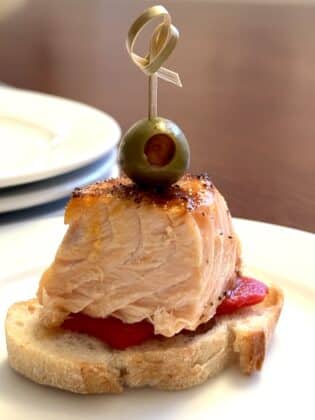Tolerating Intolerance: A Restaurant’s Guide to Gluten-Free Ingredients
Planning your next hearty meal or choosing from a range of foods on a restaurant menu is one of life’s simple pleasures. But for someone with celiac disease, a food intolerance or allergy, the choice can be painfully limited. Food is central to so many social situations, and food intolerances can make people feel totally alienated and full of anxiety.
But it doesn’t have to be that way.
Our restaurant, Food for Friends, in Brighton, England, has been serving vegetarian, vegan and gluten-free dishes for over 30 years. The focus is on fresh, great quality and locally sourced ingredients to create really tasty food, without substitutes. And because so many of our customers follow a gluten-free diet, gluten-free cooking was something — whether we liked the challenge or not — we simply had to embrace.
The restaurant’s owner is sensitive to the subject because his daughter has a mild intolerance to gluten. He said, “When we found out it was quite daunting; we not only had to think about what we were cooking for her in a family environment, but about how she was being fed at school, at parties and in other people’s houses. And this is the same for adults with intolerances.”
But having a gluten intolerance need not be an obstacle to great food. There are many exciting and readily-available ingredients these days, certainly a lot more than when the restaurant opened back in 1981. Over the years we’ve found some really great ingredients that are not merely a substitute for their gluten-containing counterparts, but often superior, more nutritious, and tastier.
Here are our top 10 gluten-free (and vegetarian too) ingredients:
Quinoa
Known as the ‘mother grain’ by the Incas, quinoa is a complete protein (unlike wheat or rice) and is packed full of dietary fiber and iron, particularly important for vegetarians. A bestseller at the restaurant is our quinoa salad with broad bean, red currant and caramelized fennel with fresh lime and herbs.
Buckwheat
Don’t be fooled by the name—buckwheat doesn’t contain wheat or gluten. Buckwheat wraps are an easy lunch option, filled with your favorite ingredients (we like avocado and fresh tomato salsa). A great idea to bring out the flavor of the wrap is to toast it once it’s filled.
Polenta
An Italian cupboard staple, polenta is made by grinding corn into flour. A favorite treat at the restaurant is polenta chips with garlic aioli. They fly out of the kitchen when we put them on the menu!
Tapioca pearls
Tapioca is a white starch extracted from the root of the cassava plant. Tapioca pearls are sold dried and need to be simmered until plumped and soft. They can be used in drinks or sweet or savory foods, or even pickled.
Taco shells
These crispy shells made of cornmeal are a natural for a midweek casual dinner. We think they’re best served with pinto bean chili, sour cream, grated cheese and homemade guacamole.
Almond flour
This wonderful flour has a fabulous nutty flavor. Almond and raspberry is a winning combination and our most popular cake is, in fact, a gluten-free raspberry and almond tart.
Coconut flour
Baking with coconut flour can be tricky as you need a lot of eggs to help bind the flour together — but the results make it totally worth it! There are great recipes online, and muffins are a good starting point.
Gram/garbanzo/chickpea flour
High in protein (particularly important for vegetarian diets), gram flour is wonderful for coating vegetables for Indian pakoras, fritters, or flatbreads. Falafel is also made from chickpeas, has a wonderfully crunchy exterior when fried, and is delicious served with hummus or tzatziki (cucumber-yogurt sauce).
Blended flour
The range and availability of gluten-free blended flour available these days is astonishing. It’s usually a mixture of rice, potato and tapioca flour. The process of baking bread with blended flour is completely different but totally manageable. “It’s much more like cake batter as the mixture is very wet,” says Food for Friends’ dessert chef, Rod. “Gluten-free flours are a little more difficult to work with than regular flours, but it’s just a matter of getting used to cooking with them.”
Tamari
This is a wonderful wheat-free soy sauce. Wheat is probably not something you associate with soy sauce, but it is sometimes part of the manufacturing process, making the salty sauce problematic for people with celiac disease and gluten intolerance.
Initially, following a gluten-free diet may be frustrating. But with time, patience and creativity, you’ll find there are many foods that you already eat that are gluten-free and you will find substitutes for gluten-containing foods that you can enjoy.
The Food for Friends vegetarian recipe book with over 100 recipes including gluten-free and vegan is available for download or your iPad or Mac. ![]()
First published February 2015







